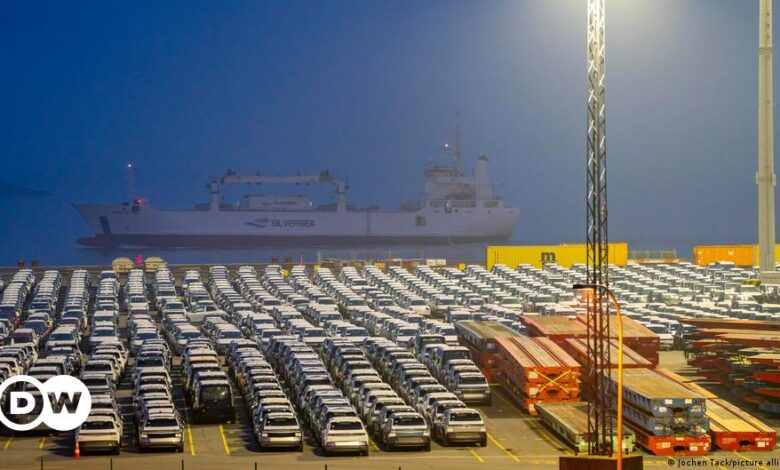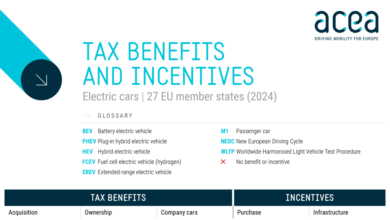European ports swamped with cars amid China EV offensive – DW – 04/25/2024

Cars are special products: They’re easier to ship than, say, oil rigs, but they’re also so large that you can’t just put them on a shelf. Each car occupies about ten square meters (107 square feet) of space, even when not in use.
This poses problems for ports where cars are loaded and unloaded ― in Germany, there are two really big ones in Bremen and Bremerhaven. The car terminal at the Port of Bremerhaven is one of the largest auto ports in the world with a turnover of more than 1.7 million vehicles per year.
BLG Logistics Group, an international seaport and logistics services provider, operates the car-handling terminal at Bremerhaven. BLG spokesperson Julia Wagner said the port has space for approximately 70,000 vehicles with more than 1,000 car carriers visiting the terminal every year.
Wagner told DW that the shipping business especially concerning automobiles at Bremerhaven had changed in recent years. “We used to have 80% export and 20% import for a long time. This ratio is now at 50:50.”
Bottlenecks from truck drivers to sales networks
The Port of Antwerp-Bruges, Belgium, with its car terminal at Zeebrugge, is Europe’s busiest port for car imports and handles twice as many vehicles as Bremerhaven. There too, huge numbers of cars are piling up currently as manufacturers and sellers are being hit by a Europe-wide slowdown in sales and logistical bottlenecks including a shortage of truck drivers.
“This is happening at all European ports that ship large numbers of cars,” says Elke Verbeelen from the communications department of the Antwerp-Bruges port. The longer dwell time of cars at the ports, however, was not only caused by a surge in imports, she told DW.
“The problem lies less in the number of cars landed but rather in the fact that they are not transported onward promptly.”
At the moment, the capacities of the main European car terminals are still large enough to park the vehicles, says Julia Wagner from Bremerhaven. “We currently do not observe a ‘congestion’ of the terminal, as reported in some media about the situation in European ports.”
Modern-day marketing
At first glance, the shipping of vehicles seems a rather straightforward business with manufacturers, distributors and sellers. However, auto production and its multiple supply chains have changed rapidly in recent years as new markets such as China have grown and trade disputes have increased auto import tariffs.
Elke Verbeelen adds that carmakers’ marketing and distribution strategies are also different from the good old showroom dealerships of the past. As customers increasingly like to buy their cars online, carmakers like Tesla have shifted their presence from the main street to the internet. With more direct marketing to customers, the cars typically “stay in the port for much longer,” often without ever seeing a showroom.
EV sales slump
Another reason for the longer dwell time of vehicles experienced at the European ports is “relatively low car sales,” said BLG Group’s Julia Wagner.
The situation has worsened after Germany abruptly stopped subsidizing purchases of electric vehicles (EVs) in December last year. “The parking times of cars from all manufacturers at the terminal have increased with the discontinuation of state subsidies that diminished sales of electric cars,” said Wagner.
This comes at a time when Chinese carmakers have launched an aggressive push to ramp up their global EV exports which climbed 58% in 2023 from the year before.
Verbeelen noted, however, that while EV sales may experience stagnation, overall car imports, including combustion-engine vehicles, are picking up again “compared with the years 2020 and 2021,” when the COVID-19 pandemic hit the auto industry as well as transportation businesses.
The result is “lower capacity for [onward] road transportation of cars due to a shortage of truck drivers,” which would “further increase the time of vehicles spend at the ports.”
This article was originally written in German.



